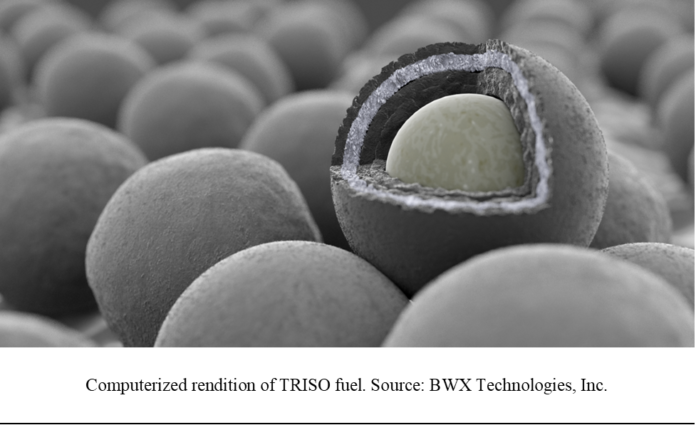By Angelina Hu
On November 2nd, company X-Energy announced that their preliminary design for a production facility of nuclear TRISO fuel had been completed. If this project is to finish, it is another step towards improvement in nuclear power sources and cleaner energy for all.
TRISO, or TRIstructural ISOtropic fuel, is a relatively new type of nuclear fuel that has yet to become commercially used. Traditional nuclear power plants use rods of fuel, such as Uranium-235. Mediated fission of the uranium creates heat, which evaporates water and produces steam. The steam turns a turbine, which creates energy. However, this system bears risk of meltdown due to high temperatures melting containment measures around the fuel source, as well as the expansion of gas increasing pressure on the inside walls of the containment structure and thus causing an explosion. As such, many people today attribute a negative connotation to nuclear energy due to worries about pollution, climate change, and disasters like Chernobyl.
X-Energy attempts to address these problems. Their Xe-100 fuel reactor design utilizes not rods, but little billiard-ball sized pebbles of fuel. Each fuel pebble contains 18,000 TRISO particles: a ball of uranium (the fuel source) wrapped in three layers of carbon. These particles are collectively embedded within a layer of graphite, a moderator substance that slows down neutrons so that they are more likely to be absorbed by uranium, thus triggering the fission reaction. Finally, a coating of pyrolytic carbon covers the entire pebble.
Over 200,000 fuel pebbles are arranged in a column within the nuclear reactor’s core, and they are projected to be capable of running for 60 years without interruption. Helium gas is then circulated through the core, heated by the fission reactions, and used to boil water. The steam produced turns a turbine to produce energy, just like in traditional plants.
So why is this important? There are two primary reasons– one, the design of TRISO fuel pebbles reduces the risks of reactor meltdown and pollution, and two, this model of reactor does not require a lot of space. The carbon layers around the individual particles and the pyrolytic coating contain almost all fission byproducts, while also being incredibly durable and able to sustain high pressure. Helium is also very effective at absorbing heat without becoming reactive, so the risk of serious meltdowns like Chernobyl and Fukushima is dramatically lowered. The compact spherical shape of the fuel also reduces storage space while maximizing efficiency.
However, concerns about this model still arise. Traditional reactors heat up the water directly, while X-Energy’s reactor heats up helium, which heats up water. While this lowers the risks of high pressure increases due to mass amounts of water being evaporated, helium is slowly becoming less plentiful and some heat may be lost in this transition between the gas to water. Water has a high specific heat, meaning it takes a lot of energy to boil it; any heat loss would inadvertently harm energy production. It’s unsure at the moment whether or not this is worth it compared to increased safety.
According to X-Energy, a reactor utilizing TRISO fuel is projected to be functioning by 2027. Such a short time-frame is promising to the future of clean energy, so one can only hope that we will achieve this and much more in the next few years.

